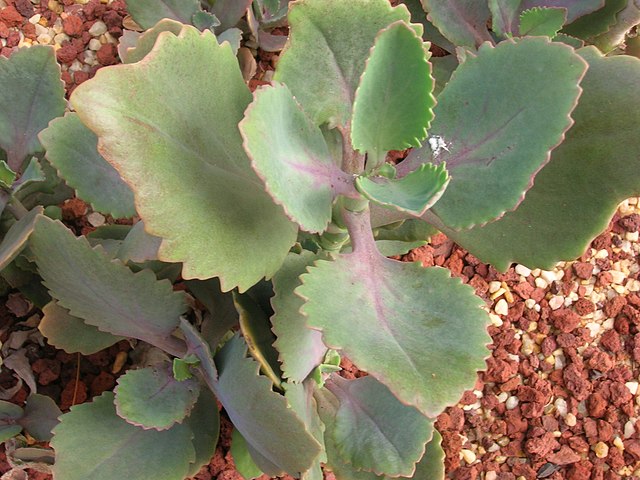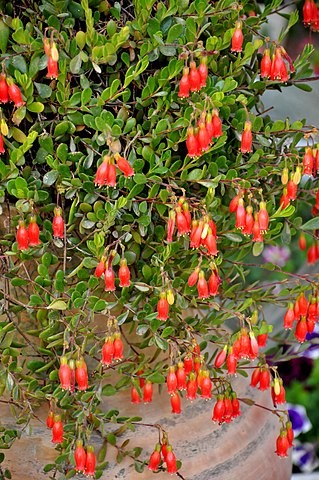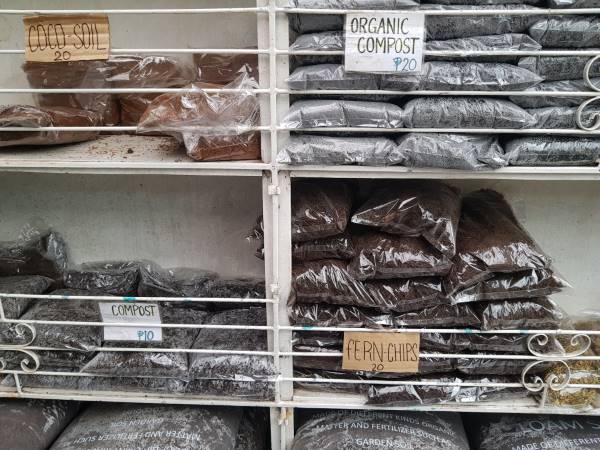This succulent plant is a member of the Crassulaceae family and is native to Madagascar. It can also be found in other parts of Africa and Asia, and has been introduced to other regions as an ornamental plant.
Kalanchoe Laciniata is a unique-looking plant with long, thin leaves that grow up to 12 inches in length. The leaves are a blue-green color and have a jagged, toothed edge, giving the plant a fern-like appearance. The plant can grow up to 2 feet in height and width, making it an excellent choice for a statement piece in any garden or indoor space.
How much light does it need?
This succulent plant is relatively easy to care for, and it requires minimal attention. It prefers bright, indirect sunlight, but it can also tolerate partial shade. However, direct sunlight for extended periods can cause sunburn or damage to the plant’s leaves. Kalanchoe Laciniata can be grown both indoors and outdoors, depending on your preference.
When it comes to temperature and humidity requirements, this succulent prefers warm temperatures between 60°F and 80°F. It can also tolerate low levels of humidity, but it’s essential to ensure adequate air circulation around the plant to prevent fungal infections. In colder temperatures, it’s important to protect the plant from frost and freezing temperatures.
Kalanchoe laciniata Watering
Watering requirements for Kalanchoe Laciniata are similar to other succulents, as they prefer infrequent watering. Overwatering can cause root rot, while underwatering can lead to dehydration and wilting. To avoid these issues, ensure that the soil is completely dry before watering. A good rule of thumb is to water the plant once a week during the growing season and less frequently during the dormant season.
Kalanchoe laciniata, also known as the “Christmas tree plant,” can be vulnerable to both overwatering and underwatering. You can determine if your plant is experiencing either of these issues by looking for specific signs.
Overwatering can cause yellowing, soft and limp leaves, brown or black roots, a mushy stem or soft leaves, a foul smell emanating from the soil, and soil that feels consistently damp or wet to the touch.
On the other hand, underwatering may cause wilting leaves that look dry and crispy, brown leaves that start at the tips and edges, dry soil, a lightweight feeling when you lift the plant, and yellow leaves that fall off effortlessly.
To assess whether your Kalanchoe laciniata is overwatered or underwatered, it’s crucial to check the soil moisture level frequently. Insert your finger roughly an inch into the soil to determine if it’s damp or dry. If it feels moist or wet, the plant may be overwatered, while if it feels dry, the plant may be underwatered. Adjust your watering schedule accordingly, providing the plant with water when the top inch of soil is dry, and avoid letting it sit in standing water.
Kalanchoe laciniata Repotting
Repotting should be done every two to three years or when the plant has outgrown its current container. Signs that your succulent needs repotting include roots growing through the drainage holes, stunted growth, or the plant tipping over due to a top-heavy root system. When repotting, use fresh soil, and wait for a week before watering to allow the roots to settle.
When it comes to soil or potting mix, a well-draining soil mixture is ideal for Kalanchoe Laciniata. This can be achieved by using a cactus or succulent soil mix. It’s essential to ensure that the pot has adequate drainage to prevent water from pooling at the bottom, causing root rot.
Fertilizing Kalanchoe Laciniata is not necessary, but a light application of a balanced, water-soluble fertilizer during the growing season can encourage blooming and growth. Fertilize the plant every two to four weeks, depending on the strength of the fertilizer.
Propagating Kalanchoe Laciniata
Propagating Kalanchoe Laciniata is relatively easy and can be done through stem or leaf cuttings. Here are the instructions for propagating Kalanchoe Laciniata:
- Take stem cuttings: Use a sharp and clean pair of scissors to take stem cuttings from the parent plant. Look for a healthy stem with several leaves, and make a clean cut just below a leaf node.
- Allow the cuttings to dry: After taking the stem cuttings, allow them to dry for a day or two until the cut ends have calloused over. This helps to prevent rotting when you plant them.
- Plant the cuttings: Fill a small pot or container with well-draining soil. Make a hole in the soil with a pencil or your finger, and place the stem cutting into the hole. Press the soil gently around the cutting to hold it in place. Water the soil thoroughly, and let it drain.
- Provide optimal growing conditions: Place the pot in a location with bright, indirect sunlight, and keep the soil slightly moist. Avoid overwatering, as this can cause the cuttings to rot. You can cover the pot with a plastic bag to create a humid environment and help the cuttings establish.
- Wait for roots to develop: In a few weeks, the stem cuttings should start to grow roots. You can gently tug on the stem to see if there is resistance, which indicates that roots have formed.
- Transplant the new plant: Once the cuttings have rooted and established new growth, you can transplant them to a larger pot or individual containers. Keep the plants in bright, indirect sunlight and water them when the soil feels dry to the touch.
Propagation can be a fun and rewarding way to grow your plant collection, and Kalanchoe Laciniata is an easy plant to propagate. With proper care and patience, you can create new plants from cuttings and enjoy their beauty for years to come.
Pruning and maintenance
Pruning and maintenance of this plant are minimal, and it only requires removing any dead or damaged leaves or stems. Kalanchoe Laciniata can be kept indoors or outdoors, but it’s essential to protect it from extreme temperatures, direct sunlight, and frost.
Pests and diseases that can affect Kalanchoe Laciniata include mealybugs, spider mites, and fungal infections. To prevent these issues, it’s essential to maintain proper humidity levels, provide adequate air circulation, and avoid overwatering. Signs that your succulent is unhealthy include yellowing or wilting leaves, a lack of new growth, or a change in color or texture of the leaves.
Kalanchoe Laciniata bloom
Kalanchoe Laciniata blooms with small, white or pink flowers that appear on tall stalks, adding a pop of color to the plant. The blooming period typically occurs during the winter and early spring months.
If you’re interested in purchasing a Kalanchoe Laciniata plant, you can find them at most garden centers or nurseries. You can also purchase them online from reputable plant retailers. When buying a plant, make sure to inspect it for any signs of pests or diseases, and choose a plant with healthy leaves and a well-established root system.
In conclusion, Kalanchoe Laciniata is an excellent choice for anyone looking for a low-maintenance, unique-looking plant that can thrive both indoors and outdoors. By following these care tips, you can enjoy the beauty of this chandelier plant for years to come.




